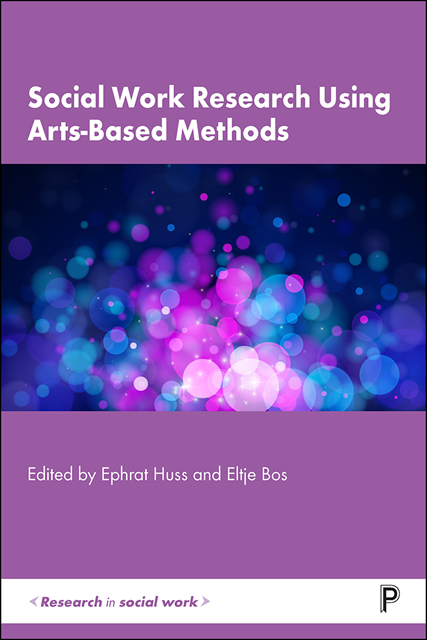Book contents
- Frontmatter
- Dedication
- Contents
- List of figures and tables
- Notes on contributors
- Introduction
- Section I Arts-based research as a method to understand and give voice to marginalised groups
- Section II Using arts-based research to listen to, and give voice to, children in social work
- Section III Arts-based research as a way for researchers and community members to understand communities
- Epilogue
- Index
8 - “I don’t like the cameras in the house. They’re looking at us all the time”: the contribution of Photovoice to children in a post-hospitalisation programme
Published online by Cambridge University Press: 13 October 2022
- Frontmatter
- Dedication
- Contents
- List of figures and tables
- Notes on contributors
- Introduction
- Section I Arts-based research as a method to understand and give voice to marginalised groups
- Section II Using arts-based research to listen to, and give voice to, children in social work
- Section III Arts-based research as a way for researchers and community members to understand communities
- Epilogue
- Index
Summary
Just to show something, anything, in the photographic view is to show what is hidden.
(Sontag, 1973, p. 94)Introduction
The present chapter examines how the use of Photovoice contributes to children in special education programmes in a post-hospitalisation programme. The Photovoice project allows these children to express their voices and points of view through photography, as well as their feelings and thoughts regarding the photographs they have taken.
Photovoice with children
Photovoice was developed by Wang & Burris (1994) as a method where researchers provide participants from disadvantaged or excluded populations with cameras for them ‘to record and to reflect their needs, promote dialogue, encourage action, and inform policy’ (p. 171). This technique offers the users a reflective possibility to examine their world and study their surroundings in an effort to represent it and create change as part of the practice of personal and social empowerment. According to the researchers (Wang & Burris, 1994), the Photovoice method is based on the idea that the participants are experts regarding their own lives; they are partners and cooperators in the knowledge construction process and free to express the topics they see as significant for them. The method is based on three main aims (Wang & Burris, 1994; Wang, 2006): to allow people to document and reflect their own and their community's points of strength and weakness; to promote a critical dialogue as well as knowledge and inner examination of important topics through a group discussion of photographs; and to reach excluded populations and make their voices heard (through pictures) among policy makers.
In the second decade of the 21st century, many studies were published dealing with Photovoice in public health, education, the social sciences, and other areas (for a detailed account see: Tsang, 2020). Recent studies with children undertaken around the world have shown that Photovoice is an effective method for children of addict parents in Israel to express secrets and negative feelings (Malka et al., 2018); a means of expressing their concerns regarding their health, such as obesity, in the US (Cahill & Suarez-Balcazar, 2012); it also had a beneficial effect on the comprehension of care-givers regarding the life experiences of chronically ill children in Australia (Drew et al., 2010);
- Type
- Chapter
- Information
- Social Work Research Using Arts-Based Methods , pp. 89 - 101Publisher: Bristol University PressPrint publication year: 2022



